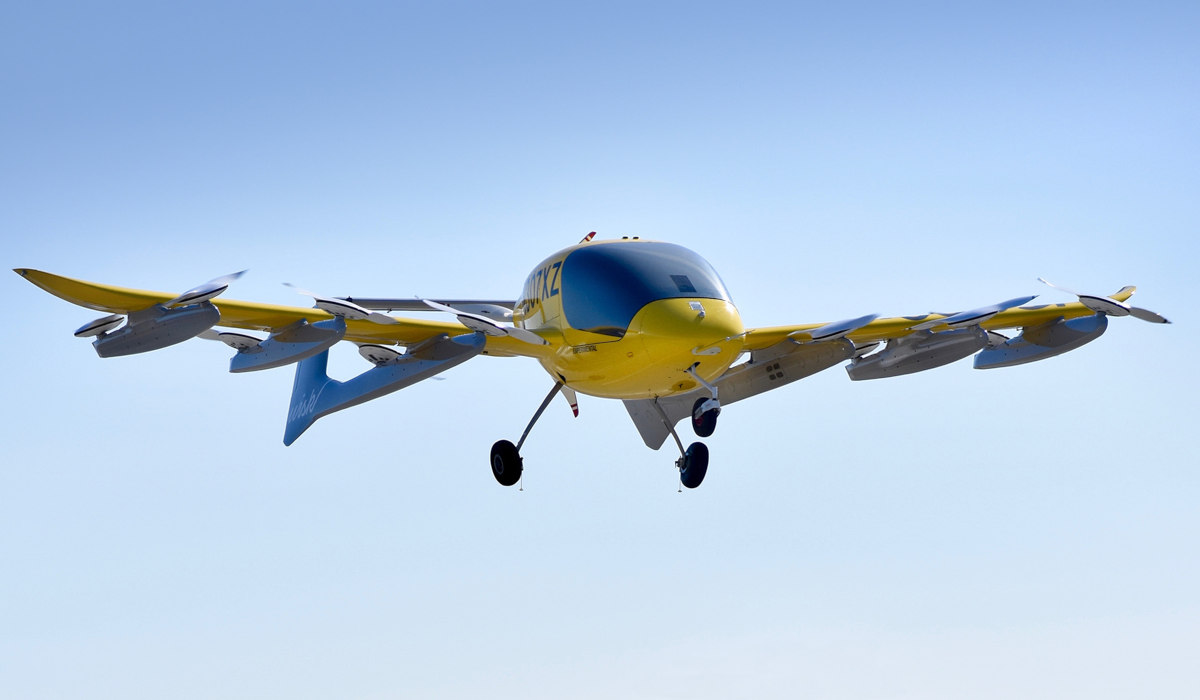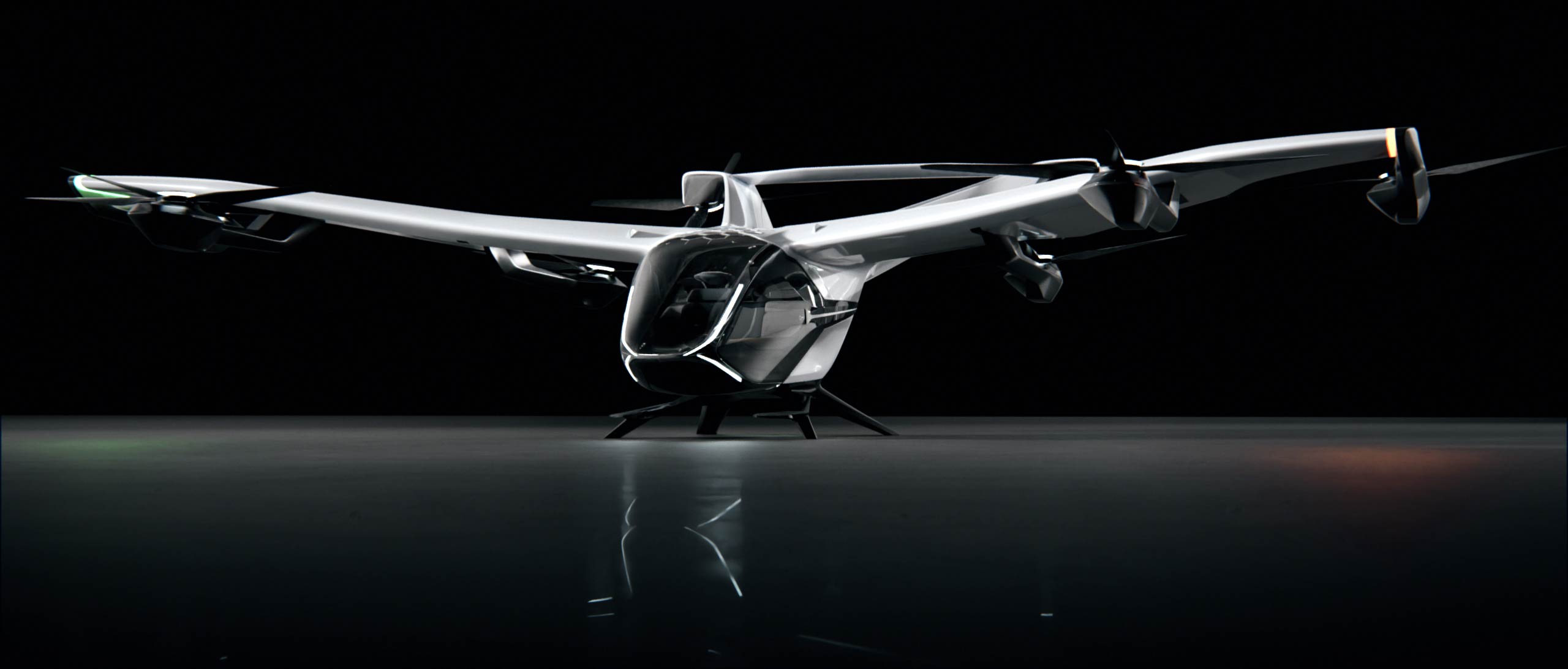Until recently, the concept of flying cars was limited to science fiction only. This might become a reality soon as big companies such as Boeing, Airbus and Hyundai have focused their attention on the development of what is commonly known as “flying taxis” or “air taxis”.
Flying cars often bring up popular imagery that has been immortalized on the silver screen by shows such as The Jetsons, and movies like Blade Runner. However, air taxis are not even close to what science fiction has given a glimpse of. Instead, these are essentially electrified air travel that has been made compact enough to fit the proportions of a cab.
Rather than cars that transform into flying vessels, flying taxis – formally called electric vertical takeoff and landing (eVTOL)– are closer to helicopters that come without the emissions, or the dependence on one main rotor.
eVTOLs will be quiet and carbon-free, yet comfortable modes of transportation that will be able to quickly get passengers to their destinations without getting tangled in congested city roads. This would also ease urban transport issues arising out of overcrowded pathways. They would be revolutionary for urban transportation. The scope provided by the air taxi concept might be the reason for its growing popularity among investors.

Leading Players
Since around 2016, a large number of start-ups that are trying to bring a variety of new eVTOL and short takeoff and landing (eSTOL) aircraft to the market have popped up. Moreover, the world’s most prominent aircraft carriers are getting ready to operate eVTOLs. Over the course of the past two years, they have placed tentative orders for more than 1,500 of the craft.
Generally, the eVTOL models in the works are expected to provide a range of approximately 20 miles to 150 miles. On the other hand, the fixed-wing eSTOL aircraft would serve the many sub-regional routes with a range of an estimated 400 miles.
Owing to their range and compactness, eVTOLs can be used for much more than making flying taxis. They could be utilized for search and rescue, organ transplant and transportation, as well as delivery of goods and tourism. In addition, the carriers investing in the eVTOLs also see it as the ideal means of transporting rich travelers and corporate passengers to and from the airport. This would be a fester alternative to other modes of commuting such as cars, trains, and app-based cabs among others.

It is likely that the wide scope of the eVTOL and eSTOL market has driven up investment in the advanced aerial mobility sector. In the last year, investment in the sector has more than tripled. Analysts at Morgan Stanley believe that the global air taxi market will be worth £2.7 trillion by 2050.
Prospective operators are eying safety certification and clearance for flying their air taxis by 2025. Boeing, Airbus, and Hyundai are some of the big names involved in making air taxis.
Airbus is making a fixed-wing eVTOL aircraft called the CityAirbus NextGen and aims to complete type certification in 2025, according to reports. Similarly, Boeing is investing $450 million in its Wisk Aero eVTOL joint venture with Kitty Hawk, a California-based startup founded by Google co-founder Larry Page and vice president Sebastian Thrun.
Over the next year, we’ll be leaping to new heights with an intensive growth phase, prep for scale manufacturing, and an increase in our Go-to-Market efforts. Follow this exciting new phase on our journey to safe, all-electric, autonomous, everyday flight! #AdvancedAirMobility
— Wisk (@WiskAero) February 14, 2022
The Asia-Pacific region is likely to be an important part of this transportation revolution, with cities in nations like Australia, Japan, China, South Korea, and Singapore already engaged in eVTOL work.
Sustainable Aviation?
The technologies used in eVTOLs have taken elements from R&D in the transportation field so far. Electric propulsion, highly efficient batteries, and lightweight composites are an integral part of air taxi design.
Some experts claim that eVTOLs are not flying cars. Sam Morrissey, executive director of Los Angeles-based Urban Movement Labs, a non-profit that helps facilitate future transport solutions said, “This is, in fact, aviation – the next evolution of it: a quieter, cleaner, more sustainable aviation.”
Our #CityAirbus demonstrator is progressing at the drone test centre in Manching. I’m happy to share with you the future of flight in the making. #eVTOL #MakingMissionsPossible pic.twitter.com/VAZ5Fb4aLq
— Bruno Even (@BrunoEven) December 1, 2020
“Once we reframe it back to aviation, I think people understand how and why we’re going to see these new vehicles and this new technology as quickly as we’re going to,” he added.
There are several challenges to having a burgeoning air taxi market in place.
Key Challenges
Proper planning and infrastructure developments will be required to allow eVTOLs to connect with existing air traffic control structures and communication frequencies. Landing and take-off spots for the flying taxis will also need to be prepared.
Until the vehicles become driverless, air taxis will require a lot of pilots. This will add to training burdens and costs. Before flying taxis become a large-scale phenomenon, they will require regulators on the ground who will have to prepare the rules and infrastructure needed to make this form of traveling viable. Regulators will also need to develop new licensing and credentials standards.

Another key challenge is the battery technology that needs to be overhauled. Moreover, if the vehicles have to cater to the needs of the general public and not just the ultra-wealthy elite, the cost will have to be kept in check. That will prevent flying taxis from becoming just a quieter, greener replacement for choppers.
The next 18 months will be quite important for this upcoming industry. During this time, manufacturers will run vital test flights and finalize the plans for vertiports.
In a matter of a few years or a decade at best, air taxis are likely to become a prominent part of the urban transportation scenario.
- Contact the author at: shreyya.mundhra@gmail.com
- Follow EurAsian Times on Google News




